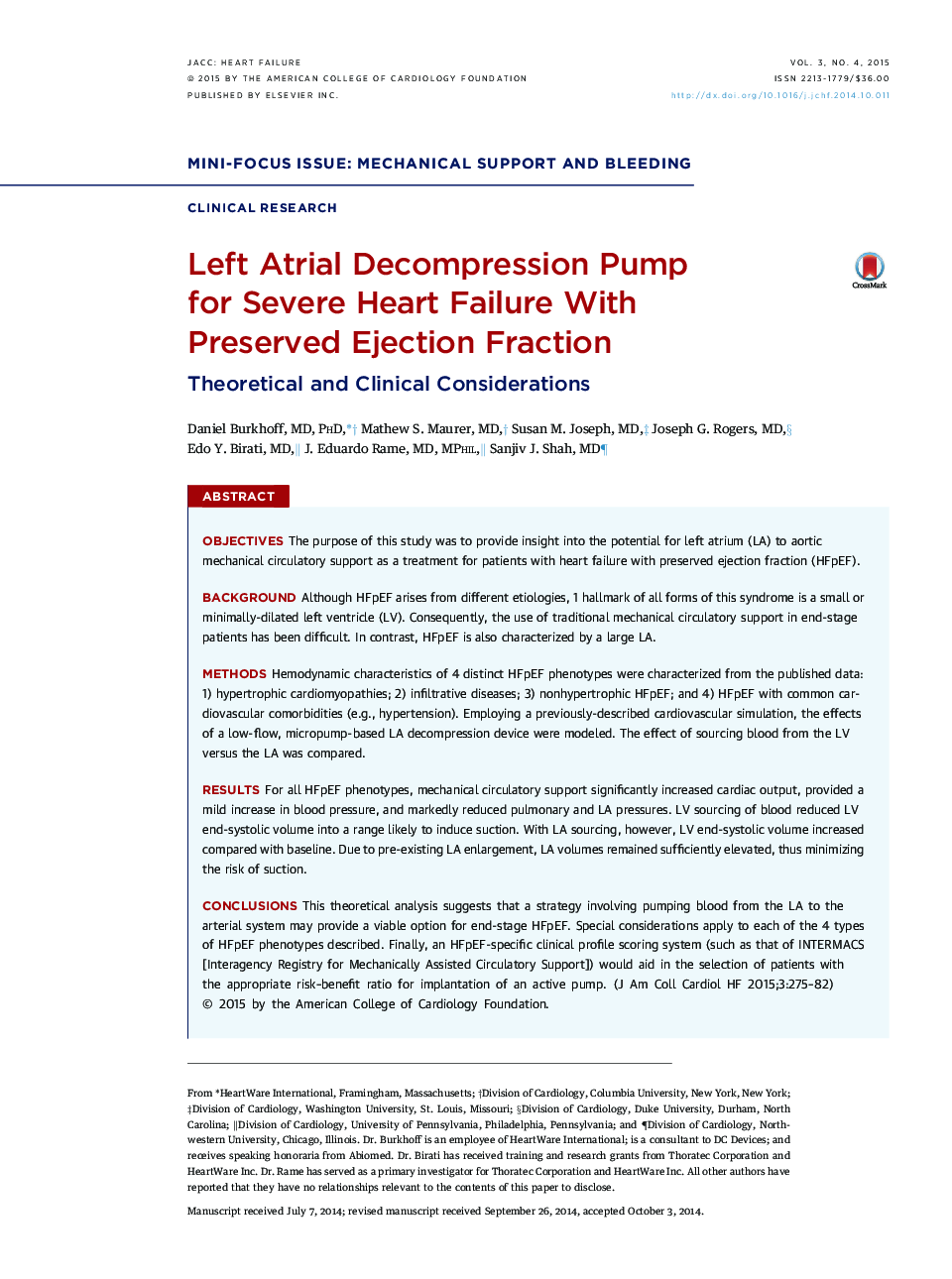| کد مقاله | کد نشریه | سال انتشار | مقاله انگلیسی | نسخه تمام متن |
|---|---|---|---|---|
| 2942350 | 1177118 | 2015 | 8 صفحه PDF | دانلود رایگان |
ObjectivesThe purpose of this study was to provide insight into the potential for left atrium (LA) to aortic mechanical circulatory support as a treatment for patients with heart failure with preserved ejection fraction (HFpEF).BackgroundAlthough HFpEF arises from different etiologies, 1 hallmark of all forms of this syndrome is a small or minimally-dilated left ventricle (LV). Consequently, the use of traditional mechanical circulatory support in end-stage patients has been difficult. In contrast, HFpEF is also characterized by a large LA.MethodsHemodynamic characteristics of 4 distinct HFpEF phenotypes were characterized from the published data: 1) hypertrophic cardiomyopathies; 2) infiltrative diseases; 3) nonhypertrophic HFpEF; and 4) HFpEF with common cardiovascular comorbidities (e.g., hypertension). Employing a previously-described cardiovascular simulation, the effects of a low-flow, micropump-based LA decompression device were modeled. The effect of sourcing blood from the LV versus the LA was compared.ResultsFor all HFpEF phenotypes, mechanical circulatory support significantly increased cardiac output, provided a mild increase in blood pressure, and markedly reduced pulmonary and LA pressures. LV sourcing of blood reduced LV end-systolic volume into a range likely to induce suction. With LA sourcing, however, LV end-systolic volume increased compared with baseline. Due to pre-existing LA enlargement, LA volumes remained sufficiently elevated, thus minimizing the risk of suction.ConclusionsThis theoretical analysis suggests that a strategy involving pumping blood from the LA to the arterial system may provide a viable option for end-stage HFpEF. Special considerations apply to each of the 4 types of HFpEF phenotypes described. Finally, an HFpEF-specific clinical profile scoring system (such as that of INTERMACS [Interagency Registry for Mechanically Assisted Circulatory Support]) would aid in the selection of patients with the appropriate risk–benefit ratio for implantation of an active pump.
Journal: JACC: Heart Failure - Volume 3, Issue 4, April 2015, Pages 275–282
